Let’s be honest, every digital and branding agency knows email marketing works, yet very few get it right.
You can have the best campaign, tool, and design with perfect copy, but if you are running an agency, you cannot go by the regular playbook.
It’s because you are not running a single brand; you are handling multiple clients across different industries.
That’s where things get tricky.
And in this article, we are going to make that simple for you. We are going to discuss why regular guides don’t work for marketing and branding agencies, what are the tweaks that you can make to help your campaign perform better, and what are the email marketing tools you can use as a branding agency.
Why Regular Email Marketing Guides Don’t Work for Digital Agencies
Most “ultimate email marketing guides” floating online are written for solo brands. Most assume that you are sending from one domain, managing one audience, and having only one goal.
But digital agencies work differently with multiple clients, different tones and deadlines. Here’s why standard advice usually doesn’t work for agencies:
1. One-size-fits-all doesn’t fit anyone
Generic strategies like “send newsletters every week” or “personalize your subject lines” sound great, but they don’t scale when you’re managing ten different industries.
A fitness client and a fintech client need completely different communication styles, send timings, and audience triggers.
Agencies can’t afford to copy-paste playbooks; you need adaptable systems.
2. Client approval slows everything down
Unlike in-house teams, agencies can’t just hit “send.”
Every campaign goes through rounds of feedback, design, copy, compliance, and brand approvals.
Traditional guides never talk about managing this creative traffic jam.
3. Reporting isn’t straightforward
Most guides end with, “Track your open and click rates.”
Simple, right? Well, not really for agencies.
You have to juggle between multiple dashboards, clients who interpret metrics differently, and KPIs always change mid-term projects.
So, reporting becomes more about storytelling than just data.
4. Too many tools, too little time
If you are running email campaigns for multiple brands, then you will be switching between CRMs, design platforms, and analytics tools.
And all this is happening in a single day. So, efficiency and not experimentation becomes your secret weapon when handling it all at once.
7 Tips and Tricks to Optimize Email Marketing Campaigns for Agencies
Now that you have some idea why regular email marketing tips don’t work for agencies, let’s discuss some of the strategies that do work in the real world.
1. Build a reusable framework for every client
Instead of starting from scratch each time, create a flexible framework.
Think:
- One shared onboarding form that collects client tone, goals, and audience insights.
- A standard campaign checklist (subject line approval, design review, final sign-off).
- Pre-approved template library sorted by campaign type (welcome, promotional, product update, re-engagement).
This approach saves hours every month and keeps creative energy focused on where it matters: strategy and personalization.
2. Segment smarter, not harder
Agencies often inherit messy email lists.
Don’t rush to blast everyone. Start small. Segment by behavior (e.g., opened last 3 campaigns), customer journey stage, or purchase intent.
Use conditional content within the same email to serve multiple audiences without rebuilding entire campaigns.
Example: A SaaS agency can send one email where existing users see “Upgrade now,” and leads see “Try a free demo.” One campaign, two outcomes.
3. Automate approval workflows
In agencies, internal chaos often kills momentum.
So, instead of chasing approvals over emails or slack threads, use tools like Zapier, Trello automations, or Make.com.
They help you send drafts to the right reviewer automatically.
You can also add due dates and comments directly, so everyone stays accountable without another “just following up” message.
4. Create a shared analytics dashboard
Clients need everything in simple formats and sending 12 different reports is not a good idea.
So, use tools like Google Data Studio or AgencyAnalytics, to build a single dashboard and provide clarity to clients.
These tools will pull all your KPIs from email platforms like open rate, CTR and conversions along with client specific goals like leads or purchases.
Also, make the story visual: trend lines, comparisons, and campaign highlights. It helps make clients confident in their work.
5. Write like a human, not a marketer
Agencies often overcomplicate copy with corporate language because they’re afraid to sound casual.
But audiences need personalized messages. So, try writing like te way you speak to a friend.
- Ditch: “We’re excited to announce our latest product launch.”
- Try: “It’s here. We’ve been dying to show you this.”
Human emails get read. Automated ones get archived.
6. Test one thing at a time
When managing multiple clients, A/B testing can spiral out of control.
So, limit each test with a single variable. Be it subject line, image placement or CTA text.
Run it for one full campaign and check results in one shared testing log.
So, over time you’ll be able to build your agency’s private playbook about what works best in every niche.
7. Create retention campaigns for your clients’ clients
Most agencies focus only on acquisitions.
But retention is where email marketing agencies shine.
Automated post-purchase flows, feedback requests, and loyalty updates.
When your client sees repeat sales going up, you become indispensable.
Bonus tip: Name your automation clearly. This is what most agencies don’t do, and I end up finding out what was the name of the automation that worked.
“ClientName-WelcomeFlow-2025Q1” beats “Automation 4.”
Organization is your silent growth hack.
Top 5 Email Marketing Tools for Agencies
The right tools make or break an agency’s workflow. You don’t need 20, just the ones that handle automation, analytics, collaboration, and scalability well. Here are five tools worth your attention:
1. WhitePanther
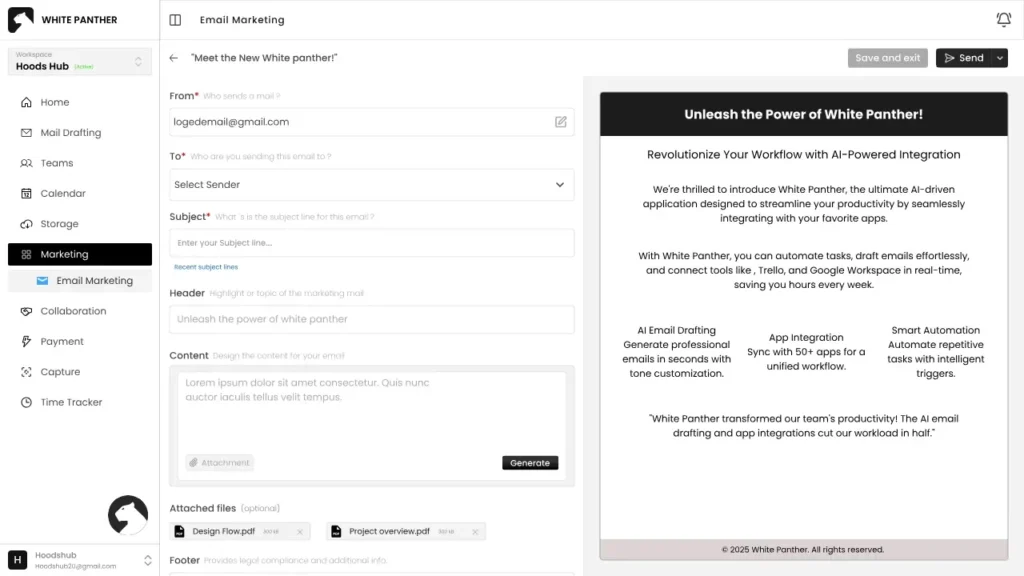
Why agencies love it: WhitePanther is more than just an email marketing tool. It brings all your tools into one AI-powered dashboard.
Its built-in email marketing feature lets you send targeted campaigns, generate content with AI, and get detailed analytics (coming soon).
WhitePanther helps you organize things better and deliver client deliverables 4X faster. With everything in one place, you don’t have to go elsewhere to find files, chats, time tracked, and more.
Key features:
- Built in email marketing with features like AI email creation, templates, segmentation for contacts and more
- Built in team chats, meetings, screen recordings and time trackers to connect with clients, team members, share feedback and track time.
- Integrate with your tools like Gmail, Outlook, Calendar, Trello, and Razorpay, so you don’t have to switch tools.
- No per user fee, so you can grow your team without having to pay for each team member
With WhitePanther, you can cut 90% of your tool cost with everything built in, while improving productivity and collaboration.
👉 Try WhitePanther now
2. HubSpot Marketing Hub
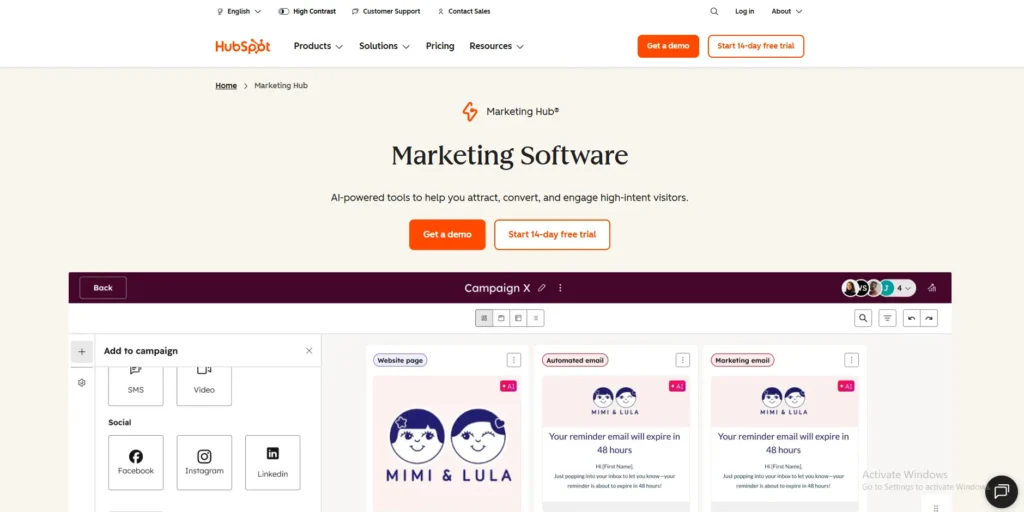
Why agencies love it: It’s a full-stack solution. From email marketing to CRM, landing pages, and analytics, all in one ecosystem.
Key features:
- Pre-built email templates and personalization tokens.
- Deep segmentation with lifecycle tracking.
- Automated reporting and client dashboards.
- Integration with hundreds of tools (including Slack and Google Ads).
HubSpot also has a dedicated Agency Partner Program that offers white-labeling and co-marketing perks, ideal for scaling services.
Related article: Top 7 Best Agency Client Management Software
3. MailerLite
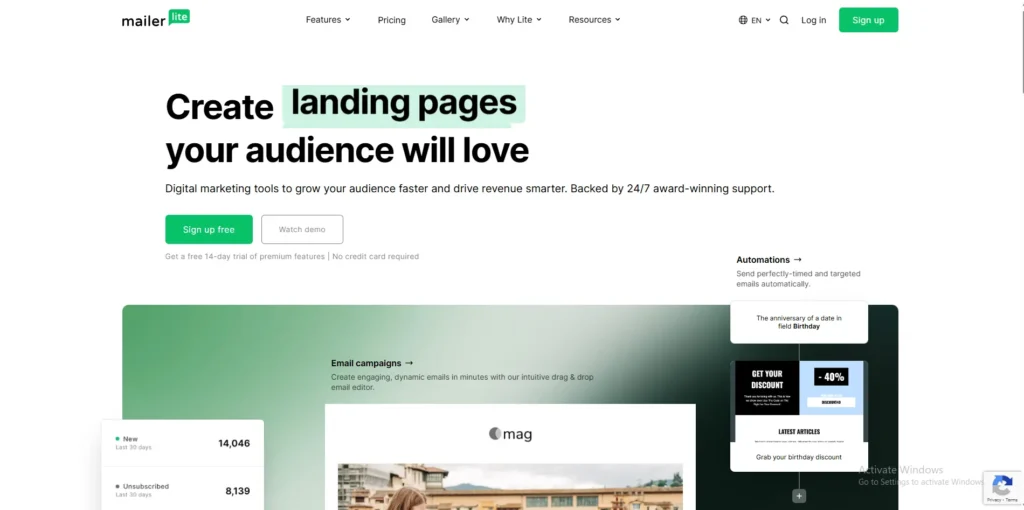
Why agencies love it: It’s lightweight, affordable, and surprisingly robust for small to mid-sized clients.
Key features:
- Drag-and-drop email editor with clean design templates.
- Campaign scheduling and automation triggers.
- Landing page and form builders.
- Multiple account management for different clients.
If you’re managing startups or small businesses with tight budgets, MailerLite is a sweet spot between simplicity and performance.
4. Brevo (formerly Sendinblue)
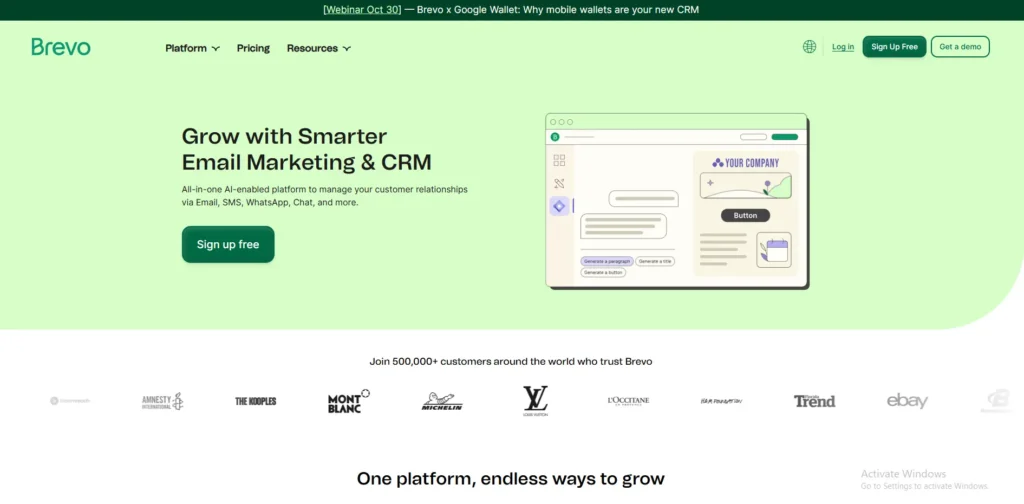
Why agencies love it: It combines email, SMS, and WhatsApp marketing in one platform, perfect for omnichannel campaigns.
Key features:
- Multi-channel automation workflows.
- Shared inbox for client support emails.
- Real-time analytics with campaign heat maps.
- Advanced segmentation by user behavior and engagement.
Brevo’s API support also allows agencies to integrate custom client portals or dashboards easily.
5. Campaign Monitor
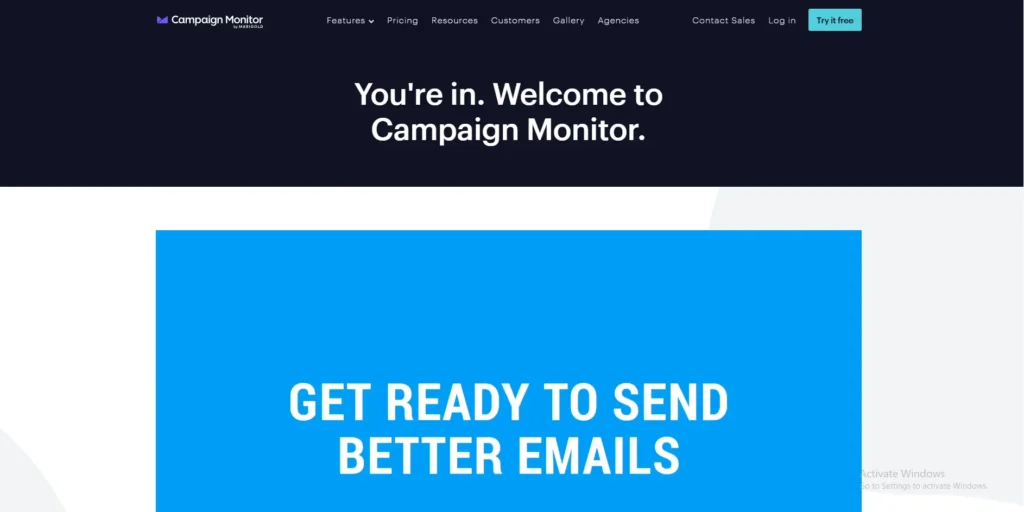
Why agencies love it: Its design-first approach is perfect for agencies that prioritize visuals and branding.
Key features:
- Stunning drag-and-drop templates optimized for mobile.
- Dynamic content for hyper-personalization.
- Custom client access and white-label dashboards.
- Detailed engagement analytics by location and device.
If your branding agency does a lot of creative storytelling or branded campaigns, Campaign Monitor helps you deliver that “premium” feel effortless.
Conclusion: Building Long-Term Wins with Email Marketing for Agencies
If you’ve made it this far, you already know. Email marketing agencies aren’t just about writing better subject lines.
It’s about building systems. Systems that manage multiple clients, automate repetitive work, and keep creativity intact.
The real magic happens when you:
- Create scalable frameworks, not one-off campaigns.
- Use automation for approvals and reporting, not just email delivery.
- Write with authenticity so every email sounds like a human.
Remember, your clients aren’t buying email campaigns; they’re buying clarity, consistency, and conversions.
The agencies that master these three Cs stay ahead no matter how crowded the inbox gets.
So, the next time someone sends you a “101 Guide to Email Marketing,” smile politely and then build your own playbook that fits your agency’s rhythm.
Because great agencies don’t just send emails. They build trust, one campaign at a time.
FAQ’s
1. What makes email marketing for agencies different?
Agencies handle multiple clients with varied goals, tones, and timelines, so scalability and systems matter more than one-off campaigns.
2. How often should agencies send emails?
Usually 1–2 times a week per client, depending on the audience and content value. Consistency beats frequently.
3. What KPIs should agencies track?
Focus on open rate, CTR, conversions, unsubscribes, and ROI and connect each metric to client goals.
4. Which tools work best for agencies?
Tools like WhitePanther, ActiveCampaign, and HubSpot help with automation, collaboration, and client-specific reporting.
5. How can agencies make email marketing efficient?
Use templates, automated approvals, and centralize work in one hub. Let tools handle the busy work so your team can focus on strategy.


